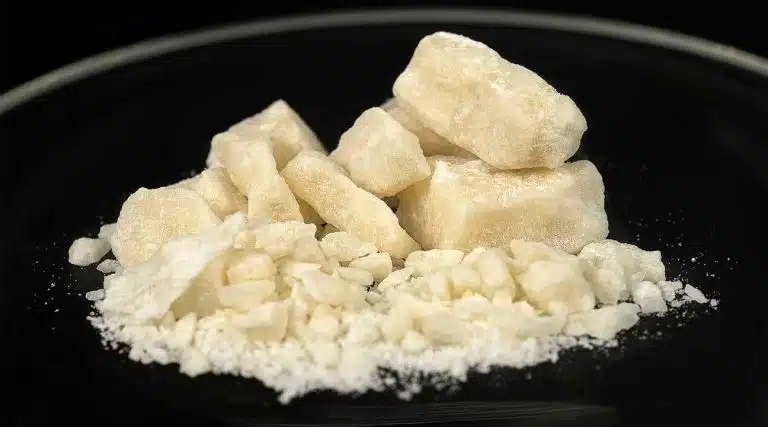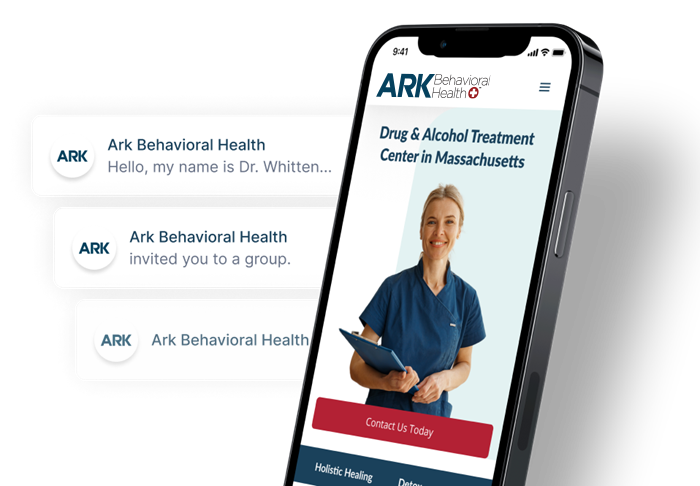Crack Cocaine Addiction | Facts, Effects, & Treatment
- What Is Crack Cocaine?
- How Is Crack Cocaine Made?
- Crack Cocaine Epidemic
- Side Effects Of Crack Cocaine
- Crack Cocaine Withdrawal
- Crack FAQ

Cocaine is a powerful and addictive stimulant derived from the leaves of coca plants in South America. It is one of the most addictive illicit drugs, especially in the form of crack cocaine because it produces a quick and intense high.
Cocaine abuse can quickly lead to addiction and can cause several adverse health effects. If you think you may be addicted to crack cocaine, there are effective treatment options that can help you sustain long-term recovery.
What Is Crack Cocaine?
Crack, also known as “freebase,” was introduced as a new way to smoke cocaine. Smoking cocaine results in a quicker and more potent high than snorting. The powder form of cocaine cannot be smoked because it burns too quickly, destroying much of the drug.
Learn more about The Dangers Of Smoking Crack Cocaine
How Is Crack Cocaine Made?
Crack is formed by cooking a mixture of cocaine powder, water, and baking soda. Once a solid forms, it is dried and broken into rocks that are sold as crack cocaine.
This form of cocaine allows it to be smoked, producing effects almost immediately. The name “crack” comes from the crackling sound it makes while it is burning.
Learn more about How Crack Is Made
What Is In Crack Cocaine?
As an illegal drug, crack can contain numerous unknown fillers and additives. According to the National Institute on Drug Abuse (NIDA), dealers often mix it with talcum powder, cornstarch, or flour.
It may also contain other drugs, including amphetamines and fentanyl. These drugs increase the risk for a life-threatening overdose.
Crack Cocaine Epidemic
In the early 1980s, crack was appearing in major cities such as Los Angeles, Houston, and San Diego. Between 1984 and 1990, the United States experienced a public health crisis due to the dramatic increase in the number of people addicted to cocaine.
Crack cocaine became more profitable for drug dealers than powder cocaine because the high wears off quicker, causing people to seek the drug more frequently.
Learn more about the Crack Epidemic
Side Effects Of Crack Cocaine
Crack affects the brain’s reward circuits by increasing the levels of dopamine, a neurotransmitter responsible for pleasure and motivation. When you use crack, your brain becomes flooded with dopamine.
After repeated use, your brain’s reward system reinforces drug use as you become more dependent on it. It also impacts your threshold for pleasure, causing you to take larger amounts to achieve the same high.
Other side effects of crack cocaine include:
- euphoria
- feeling energized
- mental alertness
- sensitivity to light, sound, and touch
- irritability
- paranoia
Learn more about the Signs & Symptoms Of Crack Cocaine Addiction
How Long Does A Crack Cocaine High Last?
Smoking crack is a more intense high than snorting cocaine, however its effects wear off much faster. When you snort cocaine, your high can last between 15-30 minutes. The high from smoking crack only lasts about 5-10 minutes.
You can become agitated and uncomfortable as the high wears off, causing you to use it more frequently.
Learn more about What A Crack High Feels Like
Health Effects Of Crack Cocaine Abuse
Frequent and long-term crack cocaine use can lead to serious adverse health effects.
Serious health effects of crack include:
- violent or aggressive behavior
- psychosis
- constricted blood vessels
- fast or irregular heartbeat
- tremors
- restlessness
- asthma
- infections, especially pneumonia
Some long-term crack cocaine users also experience severe paranoia and auditory hallucinations (hearing things that aren’t there). This can cause unexpected violent and aggressive behavior.
Can You Overdose On Crack Cocaine?
It is possible to use enough crack to produce potentially serious adverse health effects. Combining heroin and crack can cause a potentially fatal overdose. The longer you abuse crack, the greater your chances of experiencing an overdose.
Signs of crack overdose include:
- irregular heartbeat
- increased blood pressure
- increased heart rate
- heart attack
- seizures
- strokes
- hallucinations
If you think you or a loved one is experiencing a crack overdose, seek medical attention immediately. There is currently no medication that can reverse a cocaine overdose but doctors may be able to treat the symptoms.
Learn more about Crack Cocaine Overdose
Crack Cocaine Withdrawal
Your body can quickly become dependent on crack cocaine, causing withdrawal symptoms when you stop using it. Cocaine withdrawal symptoms can range from mild to severe and affect both your mental and physical health.
Withdrawal symptoms can include:
- depression
- fatigue
- increased appetite
- vivid dreams
- insomnia
- slowed thinking
- paranoia
A medical detox can help ease some of these symptoms and provide a safe environment for withdrawal. You will be monitored by a team of professionals and may be provided medication if necessary.
Learn more about Crack Cocaine Withdrawal & Detox
Crack Cocaine Addiction Treatment
Drug addiction can cause serious adverse effects on your physical and mental health. It is extremely difficult to stop using crack on your own because of its impact on your brain. If you think your substance use has led to addiction, there are several effective treatment options. Treatment options include:
Inpatient Treatment
Residential treatment programs are highly structured environments with full access to healthcare professionals. You will have time to recover physically and mentally to ensure a safe transition home.
Outpatient Treatment
If you need a more flexible option, you may choose an outpatient program. These programs are less structured but may require several trips a week to meet for individual and group counseling.
Behavioral Therapy
Behavioral therapy teaches you to identify negative thought patterns and triggers. You will learn how to replace unhealthy behaviors with healthy coping skills and how to manage cravings.
If you or a loved one would like more information about our substance abuse treatment programs, please contact Ark Behavioral Health.
Crack FAQ
What Does A Crack Rock Look Like?
A crack rock looks like a small, white rock. Crack rocks come in many different shapes and sizes, and are made from baking soda and powdered cocaine.
Learn more about What Crack Looks Like
What Does Crack Smell Like When Smoked?
Crack smells like burning plastic or rubber when smoked. It may also smell like nail polish remover and other chemicals, depending on what is used in the manufacturing process.
Learn more about What Crack Smells Like
What Is It Like Inside A Crack House?
Most crack houses are extremely dirty. Trash, drug paraphernalia, and other items often cover the floors, and the walls are typically stained or damaged.
Crack houses also tend to include guards who may use violence to keep people out or resolve conflicts.
In addition, many crack houses double as houses of prostitution. That’s because some people who are addicted to crack exchange sex for crack money.
However, not all crack houses feature trash buildup, violence, or prostitution. Some are clean and well-maintained, and the occupants behave like average citizens, usually because their crack addictions are less severe.
Learn more about Crack Houses and Crack Dens
What Is Crack Lung?
The term “crack lung” refers to the various types of lung problems that can be caused by smoking crack cocaine. These problems include:
- scarring of lung tissue
- a blockage in one of the arteries in the lungs
- blood or excess fluid filling the lungs
- air leaking from the lungs into the center of the chest
- collapsed lung
Learn more about Crack Lung
How Long Does Crack Stay In Your System?
Crack can stay in your system for about 3 to 7.5 hours. However, its metabolites can be found in blood, saliva, and urine drug tests for about 2 to 5 days after last use.
Read How Long Does Crack Cocaine Stay In Your System to learn more
What’s The Difference Between Crack & Meth?
Both meth and crack are highly addictive drugs but they differ in several ways. The biggest difference is how long they stay in your system.
Crack is a rapid and intense high that leaves your system quickly. Meth also causes a rapid high but its effects can last hours longer than crack. In addition, meth is often associated with severe long-term health effects, including dental decay and psychosis.
Learn more about Crack Vs. Meth
How Much Does Crack Cost?
The price of crack cocaine varies depending on location. However, it’s usually cheaper than powdered cocaine because it’s less pure.
A report from 2004 showed that the price of crack cocaine ranged from $18 to $200. More recent reports suggest the drug costs about $60 to $100 per gram.
Learn more about Crack’s Street Value
How Can You Spot Fake Crack?
To identify fake crack, you must know how to identify real crack. Real crack resembles rocks that range from clear-white to off-white to yellow. Crack that looks, tastes, or smells differently is probably fake.
Learn more about How To Identify Fake Crack
How Can We Reduce Stigma Associated With Crack Addiction?
People often stigmatize crack addiction because they don’t understand it. That’s why it’s important to learn about the science of addiction and share your knowledge with others.
When people realize that crack addiction is a disease and not a moral failure, they’re more likely to treat those facing addiction with respect.
Learn more about Crack Addiction’s Stigma & Derogatory Terms
What Are Crack Babies?
The term “crack babies” refers to children who were exposed to crack cocaine in utero. In the 1980s and ‘90s, many people believed that all of these children would experience severe health issues later in life.
However, researchers have since learned that many so-called “crack babies” go on to lead healthy lives. Still, prenatal exposure to any type of cocaine may cause a higher risk of problems.
Learn more about Crack & Prenatal Exposure
How Can You Help Someone With Crack Addiction?
If you want to help your loved one with crack addiction but don’t know where to begin, follow these steps:
- learn as much as you can about crack addiction
- show compassion when talking to your loved one about their addiction
- don’t support your loved one’s drug use by giving them drug money or taking on their responsibilities
- encourage your loved one to adopt healthy habits like exercising and eating right, and adopt those same habits yourself
- help your loved one find an addiction treatment program
What Is The Fair Sentencing Act?
The Fair Sentencing Act (FSA) is an Act of Congress that was signed into law by President Barack Obama on August 3rd, 2010.
The Act reduced the sentencing disparity between crack cocaine offenses and powder cocaine offenses. Before the FSA, penalties for crack cocaine offenses were 100 times harsher than penalties for powder cocaine offenses. Now, they’re only 18 times harsher.
Can You Snort Crack?
Although crack is regularly smoked via a crack pipe, crack rocks can also be broken down and snorted. Snorting crack may produce a less intense high that lasts a bit longer, but it can also damage tissue, blood vessels, and cartilage in the nose.
Learn more about Snorting Crack Cocaine
What Does Crack Do To Your Teeth?
Crack cocaine use causes teeth grinding and dry mouth, which can lead to numerous dental issues. Oral health issues associated with crack include tooth decay, tooth loss, cavities, and gum disease.
Learn more about Does Crack Cause Teeth Loss?
What Is Croak?
Croak is the street name for a combination of methamphetamine and crack cocaine, two illicit drugs that cause a long-lasting and potent high when used together.
However, these stimulant drugs greatly increase the risk of short- and long-term heart, lung, and mental health damage, including stimulant psychosis and sudden death due to organ failure, heart attack, or stroke.
Learn more about Croak Drug & The Dangers Of Mixing Crack Cocaine & Meth
Can You Shoot Crack Cocaine?
Freebase crack cocaine is minimally water soluble and is usually smoked. However, it can be prepared for intravenous injection (shooting) by using a weak base such as vinegar, lemon juice, or (ideally) ascorbic or citric acid.
Learn more about Shooting Crack Cocaine
What Are Some Examples Of Homemade Crack Paraphernalia?
Some common items used for homemade crack paraphernalia include:
- Chore Boy copper scrubbers
- Brillo steel wool scouring pads
- copper electrical wire without the insulation sheath
- tire gauges
- glass eye droppers
- car antennas
If you find a small metal or glass tube with a metal screen inside, it’s probably a makeshift crack pipe.
Learn more about What A Crack Pipe Looks Like
How Does Crack Cocaine Affect Sex Drive?
Crack cocaine increases the desire to have sex. A crack binge can involve multiple sexual interactions with different partners. High-risk sexual behavior is more likely if you’re using crack, as is the spread of sexually transmitted diseases.
Some people believe that crack improves your sexual performance because it gives your energy and makes you feel euphoric. But smoking crack cocaine regularly can lead to sexual dysfunction, such as premature ejaculation or difficulty having an orgasm.
Learn more about Crack Cocaine & Sex
Written by Ark Behavioral Health Editorial Team
©2024 Ark National Holdings, LLC. | All Rights Reserved.
This page does not provide medical advice.
National Institute on Drug Abuse (NIDA) - Cocaine Drug Facts
PubMed - Crack Cocaine Abuse- An Epidemic With Many Public Health Consequences
The American Journal of Drug and Alcohol Abuse - Crack Cocaine Use: A Review of Prevalence and Adverse Effects

Questions About Treatment?
Ark Behavioral Health offers 100% confidential substance abuse assessment and treatment placement tailored to your individual needs. Achieve long-term recovery.
100% confidential. We respect your privacy.
Prefer Texting?
Our friendly support team is here to chat 24/7. Opt out any time.







 Learn More
Learn More








